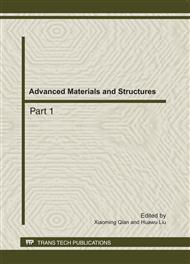p.429
p.433
p.442
p.446
p.451
p.455
p.460
p.464
p.468
A Simple and Sufficient Method to Fabricate ZnO Nanowire Thin-Film Transistors
Abstract:
Large-scale fabrication of ZnO nanowire (NW) based devices with a low cost process is a key issue in practical application. In this paper, we report a simple and sufficient self-assembly process to prepare highly dense, uniform ZnO NW films. In this process, the NWs are modified with the aminopropyltriethoxy silane (APTES) to form the positively charged amine-terminated layer, so they are adsorbed on negatively charged SiO2/Si substrates to form ZnO NW films by the electrostatic interaction in aqueous solution. Nanowire thin-film transistors (NW-TFTs) based on the prepared ZnO NW films are fabricated. A typical NW-TFT exhibited a current on/off ratio of 2.7×105, a transconductance of 546 nS and a field-effect mobility of 8.9 cm2/V•s. This study may pave the way toward large-scale fabrication of ZnO NW based devices with simple, sufficient and low cost process.
Info:
Periodical:
Pages:
451-454
Citation:
Online since:
September 2011
Authors:
Keywords:
Price:
Сopyright:
© 2011 Trans Tech Publications Ltd. All Rights Reserved
Share:
Citation:


